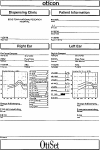Selecting and Pre-setting Amplification for Children: Where Do We Begin?
- PMID: 25425890
- PMCID: PMC4172163
- DOI: 10.1177/108471389900400207
Selecting and Pre-setting Amplification for Children: Where Do We Begin?
Figures








Similar articles
-
Where to begin? The mechanism of translation initiation codon selection in eukaryotes.Curr Opin Chem Biol. 2006 Oct;10(5):480-6. doi: 10.1016/j.cbpa.2006.08.010. Epub 2006 Aug 28. Curr Opin Chem Biol. 2006. PMID: 16935023 Review.
-
Early amplification options.Ment Retard Dev Disabil Res Rev. 2003;9(4):236-42. doi: 10.1002/mrdd.10086. Ment Retard Dev Disabil Res Rev. 2003. PMID: 14648816
-
Conventional Amplification for Children and Adults with Severe-to-Profound Hearing Loss.Semin Hear. 2018 Nov;39(4):364-376. doi: 10.1055/s-0038-1670699. Epub 2018 Oct 26. Semin Hear. 2018. PMID: 30374208 Free PMC article. Review.
-
Status Epilepticus-Work-Up and Management in Children.Semin Neurol. 2020 Dec;40(6):661-674. doi: 10.1055/s-0040-1719076. Epub 2020 Nov 5. Semin Neurol. 2020. PMID: 33155182 Review.
-
Mild bilateral and unilateral hearing loss in childhood: a 20-year view of hearing characteristics, and audiologic practices before and after newborn hearing screening.Ear Hear. 2014 Jan-Feb;35(1):10-8. doi: 10.1097/AUD.0b013e31829e1ed9. Ear Hear. 2014. PMID: 24300117
Cited by
-
"Every breath you take": evaluating sound levels and acoustic characteristics of various neonatal respiratory support and ventilation modalities.Front Pediatr. 2024 Apr 19;12:1379249. doi: 10.3389/fped.2024.1379249. eCollection 2024. Front Pediatr. 2024. PMID: 38706923 Free PMC article.
References
-
- Allen P, Wightman F. (1994). Psychometric functions for children's detection of tones in noise. J Speech Hear Res 37: 205–215 - PubMed
-
- American Speech-Language-Hearing Association. (1994). Guidelines for fitting and monitoring FM systems. Asha 36(Suppl.):l–9.
-
- Benoit R. (1989). Home use of FM amplification systems during the early childhood years. Hear Instrum 40: 8–12
-
- Bentler RA. (1989). External ear resonance characteristics in children. J Speech Hear Dis 54: 265–268 - PubMed
LinkOut - more resources
Full Text Sources
